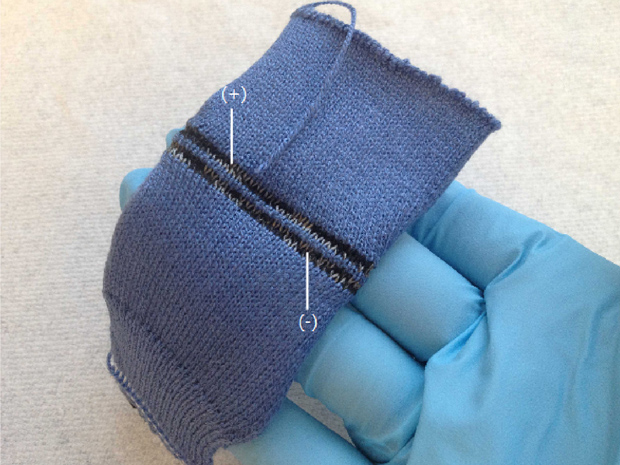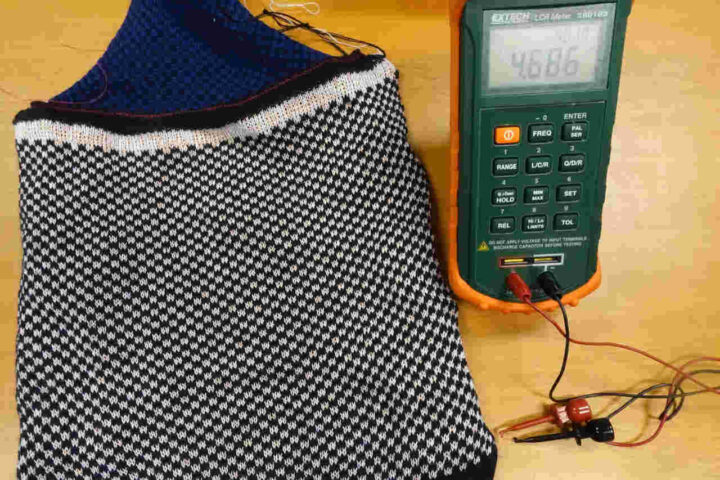
Knitted clothing to produce and store electricity
In the rapidly advancing world of wearable technology, researchers and engineers are constantly exploring innovative ways to enhance the functionality and convenience of smart devices. One intriguing development is the concept of knitted clothing that can store energy, providing a unique solution to power smart devices on the go.
This article delves into the exciting realm of energy-storing textiles, highlighting their potential applications, scientific foundations, and the benefits they offer to users.

Collaboration between Drexel University and U.S. Naval Academy will conduct sooner to get more autonomy for sensors and other electronics already integrated into smart clothing. You can suppose what would be about when thinking of U.S. Naval Academy.
Researchers discovered a way to embed activated carbon particles into different types of yarn to compile a knitted clothing that store energy.
Smart fabrics have been in development for years and according to a Gartner study from November 2014, the smart garment field will grow spectacular from 100,000 units sold worldwide to 26 millions in 2016.
Need for light weight and wearable energy sources
Any electronic device needs energy for processing data and information and most of the time use solid battery which are not very aesthetic all the time. The challenge for several research groups is to create a flexible energy storage system that could be integrated into the fabric.
Last year was in discussion the issue of a fiber like a super-capacitor made from grapheme and carbon nanotubes which obtained highest volumetric energy storage density. That was about 6.3 microWatt/hour/cubic millimeter but is well known that carbon nanotube is still expensive and possible toxic.
The use of activated carbon to store more energy
To avoid these shortcomings Drexel University team used activated carbon, which is less expensive, nontoxic and can reduce absorption of poisonous substances. The supervisor of the research, the scientist called Yury Gogotsi decided to use an area of 3.000 square cm that can store the equivalent energy of 4 square cm, V coin cell battery.
To reach this energy storage density Drexel University research team used a technique called natural fiber welding-NFW which was patented in 2009. Through this technique some materials are embedded for example: activated carbon into a cellulose based yarn made from cotton, linen, bamboo or viscose.
Ionic liquid was applied to the cellulose fibers causing the biopolymer to swell and the individual polymer chains to start separately. Instead to allow the material to be complete dissolved, the ionic liquid was mixed with carbon particles than when the yarn was swelled partially the carbon was embedded into the fiber surface. Then the ionic liquid is removed by rinsing with water and then the cellulose is solidified.
This becomes a process with the help of machine which continuously creates tens of meters of yarn at time and the steps were perfected by Drexel University PhD Kristy Jost and Commander David P. Durkin at the U.S. Naval Academy.
As Durkin says “The only thing driving the cost of NFW would be the ionic liquids”. This can be expensive but should be other alternatives as organic solvents because they aren’t volatile, can be recycled during the water reconstitution process.
Probably due to low energy density of the current technology the energy storage textiles to power smart phones, will not be use yet, but as I said in the beginning we could imagine that this project serves to a purpose. If the army was interested about this project that means it is important quite enough.
Jost started working on textile energy storage because he noticed the growing number of e-textile on the market but they use only solid battery packs attached, rather than incorporating an energy storing product.



